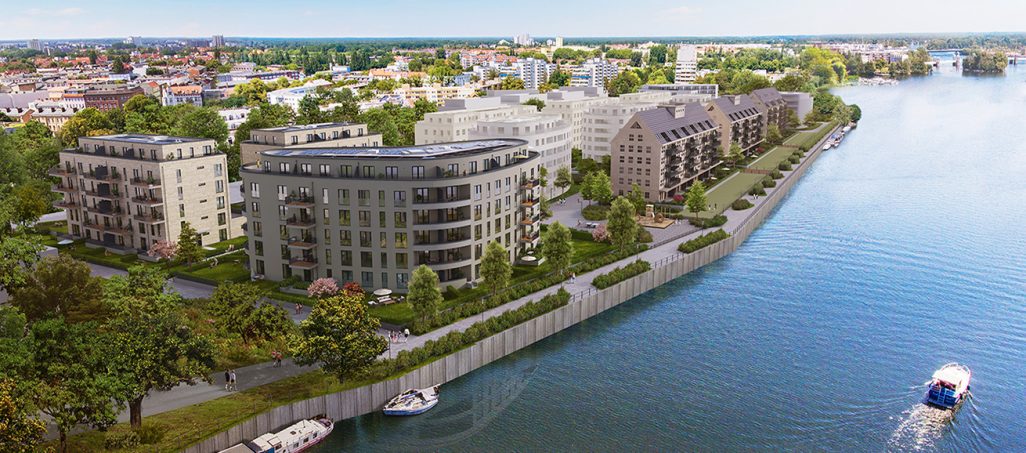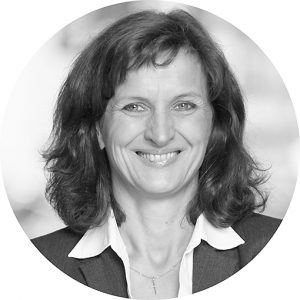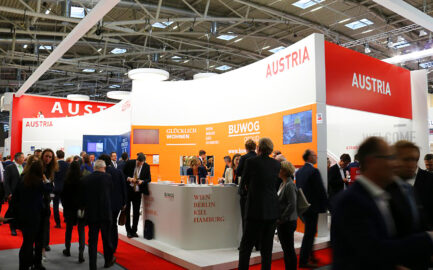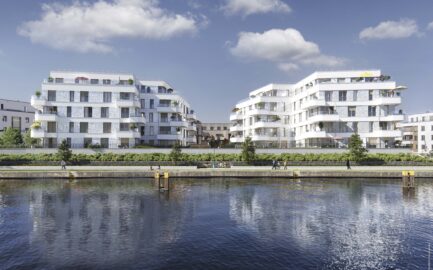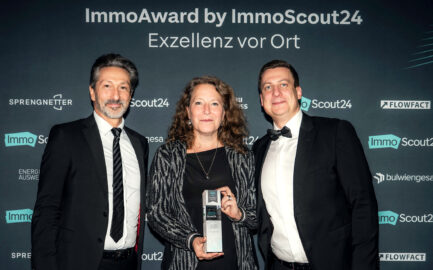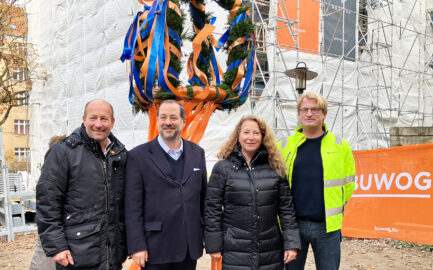BUWOG sets a good example when it comes to sustainability: in the development of new construction projects, we think holistically and focus consistently on energy efficiency and the conservation of resources. We explain what this specifically means by example of BUWOG SPEICHERBALLETT – a sustainable residential neighbourhood that BUWOG is currently developing in Berlin-Spandau.
Directly on the idyllic banks of the Havel – opposite the island of Eiswerder – BUWOG is currently developing new housing for rent and for purchase in several phases of construction. The focus is not only on climate protection, but on various aspects pertaining to social and economic sustainability as well.
Resource conservation
Building with resource conservation in mind – many first think of apartments that require minimal heating as a result of structural thermal insulation. But in the BUWOG SPEICHERBALLETT neighbourhood, it means even more: smart water management ensures that rainwater is collected in an underground cistern so that it can be used, for example, for watering the garden areas and even toilet-flushing. Fewer sealed surfaces and more permeable pavement on the property also help ensure that rainwater is deliberately returned to the natural water cycle.
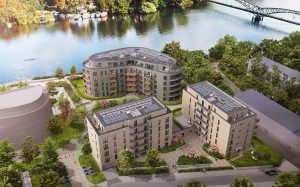
The use of photovoltaic systems makes an important contribution to the sustainable and climate-neutral energy supply. Solar modules installed on numerous rooftops generate “green” electricity from solar energy. Our ambitious aim: in the future, we intend to increase the share of renewable energies even further. By 2023, our plan is for every third apartment in our new construction projects to be supplied with renewable energy. BUWOG is also relying increasingly on renewable energy sources to operate its construction sites: for example, as the largest consumer at BUWOG SPEICHERBALLETT, the cranes will be powered by eco-electricity starting in June 2021.
Smart mobility concepts
BUWOG is also focusing on sustainable mobility concepts, of course: “On the one hand, we promote alternatives to owning a car. In addition to good public transport connections, this also means, for example, that a sufficient number of parking spaces for bicycles are planned. The neighbourhood itself will remain car-free”, says Elke Kaczmarek, development manager at BUWOG. Parking is available in the nearby underground garages. Up to 60 percent of the parking spaces are already fitted for charging electric cars. Currently, around 29 percent of the parking spaces in BUWOG’s development pipeline are fitted for the operation of electric cars. The next target according to lawmakers: 100 percent.
Social & environmental sustainability
Our slogan is happy living – a promise that also involves social sustainability and an intergenerational quality of life. BUWOG SPEICHERBALLETT is intended to be a neighbourhood for every generation. It will have barrier-free and green outdoor areas with seating and play areas. The neighbourhood’s own daycare centre will be added in a later phase, and in addition to the partly and to some extent fully barrier-free flats, a building specially designed for senior citizens is planned, including service apartments, shared living areas for those with dementia, and a daycare centre that is also open to people who do not live in the neighbourhood.
The outdoor areas will be planted with lush, new shrubs and trees adapted to regional conditions, such as weeping birch, juneberry and aspen, which are typical for the vegetation of the Havelland region. The diversity of species and the quantity of plantings planned exceed the required minimum.
And what’s more: sustainability already starts with the selection of building materials. We make sure to source sustainable raw materials from the region wherever possible and sensible. This not only secures local jobs, but also reduces CO2 emissions by shortening delivery routes. These include, for example, building materials made from particularly durable or even recycled materials, such as recycled concrete in the outdoor facilities, biological insulating materials made from plant residues, sawdust or shells, pollutant-free and durable roofing membranes (EPDM), heavy-insulation Poroton bricks with mineral perlite filling (volcanic expanded glass), and façade cladding with trapezoidal sheeting made largely from recycled aluminium.
Preservation: architectural monuments as housing
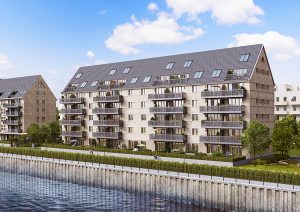
Sustainability also entails preservation at BUWOG SPEICHERBALLETT. Built in the 1930s and having stood empty for years, three historic warehouses originally stood on the premises. While the two southern warehouses are currently being refurbished in accordance with preservation requirements, the northern, windowless warehouse has been demolished.
HAVEL-SPEICHER, a new build designed in close consultation with the state conservation authority, is being built in its place. The building is based on the historic cubature, thus the original external dimensions are faithfully reproduced. This exceptional new building will then complete the listed warehouse ensemble, which was the inspiration for the project’s name. The project is being developed by the renowned architectural firm GFB Alvarez & Schepers of Berlin.
BUWOG project manager Elke Kaczmarek:
“The preservation of historic buildings is not only for protecting monuments, it also contributes to the sustainable use of resources and building materials. Another detail for resource conservation: the new HAVEL-SPEICHER building is being constructed on an existing slab of the original warehouse”.
Ecological, economic and social sustainability play an important role in BUWOG’s new construction projects. Another beacon of our sustainability agenda is the 52° Nord neighbourhood in Berlin-Grünau, which received the German Housing Award in 2020. There, BUWOG is constructing buildings using the wood-hybrid method.

